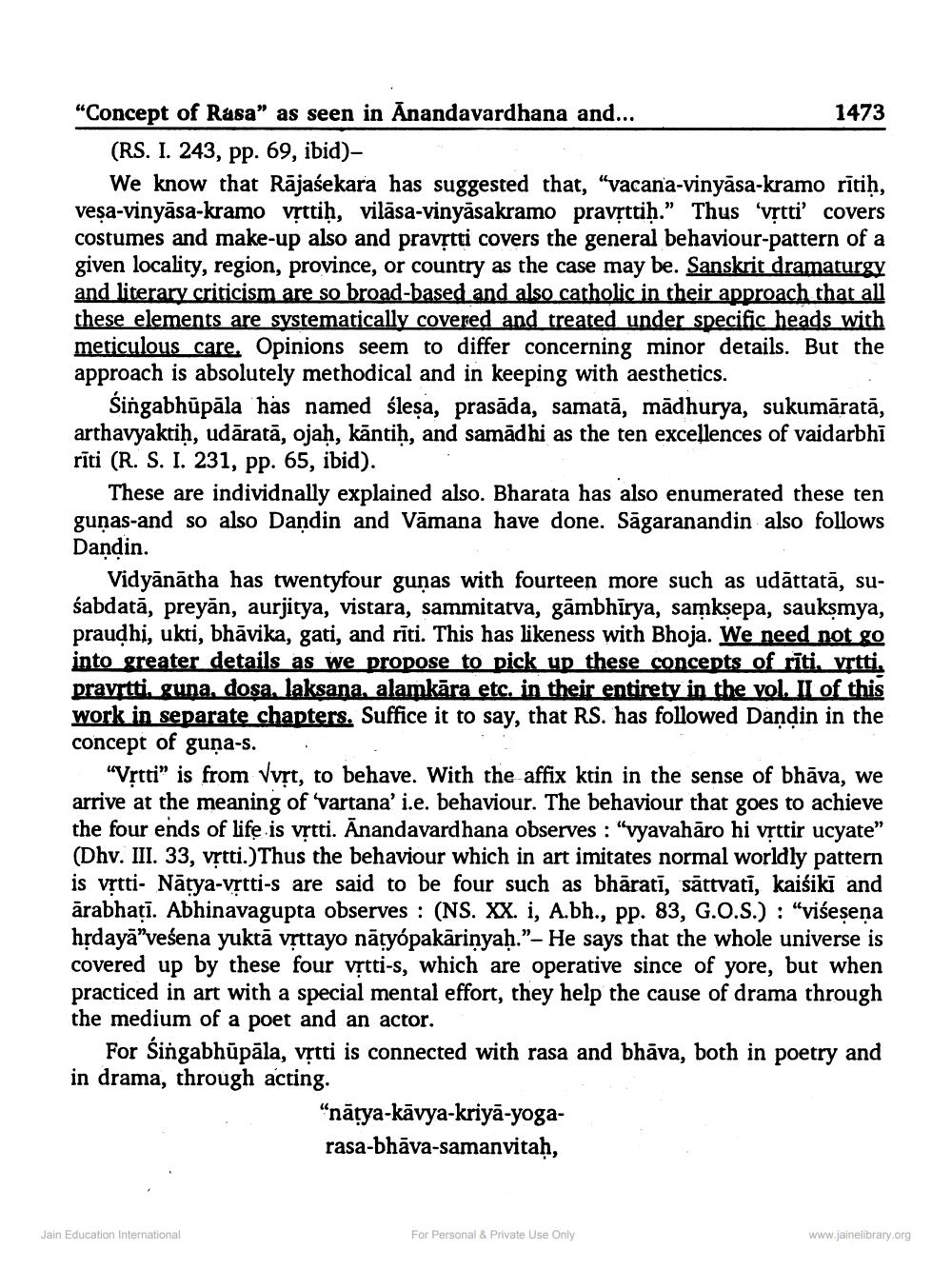________________
"Concept of Rasa" as seen in Anandavardhana and...
1473 (RS. I. 243, pp. 69, ibid)
We know that Rājasekara has suggested that, "vacana-vinyāsa-kramo rītih, vesa-vinyāsa-kramo vșttiḥ, viläsa-vinyāsakramo pravsttih." Thus 'vstti' covers costumes and make-up also and pravștti covers the general behaviour-pattern of a given locality, region, province, or country as the case may be. Sanskrit dramaturgy and literary criticism are so broad-based and also catholic in their approach that all these elements are systematically covered and treated under specific heads with meticulous care. Opinions seem to differ concerning minor details. But the approach is absolutely methodical and in keeping with aesthetics.
“ingabhūpāla has named śleșa, prasāda, samatā, mādhurya, sukumāratā, arthavyaktiḥ, udāratā, ojah, kantiḥ, and samadhi as the ten excellences of vaidarbhī rīti (R. S. I. 231, pp. 65, ibid).
These are individnally explained also. Bharata has also enumerated these ten gunas-and so also Dandin and Vamana have done. Sāgaranandin also follows Dandin.
Vidyānātha has twentyfour gunas with fourteen more such as udāttatā, suśabdată, preyān, aurjitya, vistara, sammitatva, gāmbhīrya, samksepa, sauksmya, praudhi, ukti, bhāvika, gati, and rīti. This has likeness with Bhoja. We need not go into greater details as we propose to pick up these concepts of rīti, vrtti, pravrtti, guna, dosa, laksana, alamkāra etc. in their entirety in the vol. II of this work in separate chapters. Suffice it to say, that RS. has followed Dandin in the concept of guna-s.
"Vrtti" is from Vvrt, to behave. With the affix ktin in the sense of bhāva, we arrive at the meaning of vartana' i.e. behaviour. The behaviour that goes to achieve the four ends of life is vịtti. Anandavardhana observes : "vyavahāro hi vịttir ucyate" (Dhv. III. 33, vrtti.) Thus the behaviour which in art imitates normal worldly pattern is vrtti- Natya-vrtti-s are said to be four such as bhāratī, sātrvati, kaiśikī and ārabhatī. Abhinavagupta observes : (NS. XX. i, A.bh., pp. 83, G.O.S.) : "viśesena hrdayā”vešena yuktā vrttayo nātyopakārinyah."- He says that the whole universe is covered up by these four vịtti-s, which are operative since of yore, but when practiced in art with a special mental effort, they help the cause of drama through the medium of a poet and an actor.
For Singabhūpāla, vịtti is connected with rasa and bhāva, both in poetry and in drama, through acting.
“nāțya-kāvya-kriya-yogarasa-bhāva-samanvitaḥ,
Jain Education International
For Personal & Private Use Only
www.jainelibrary.org




